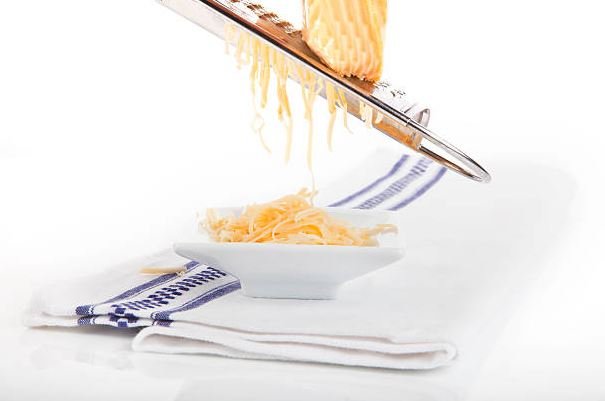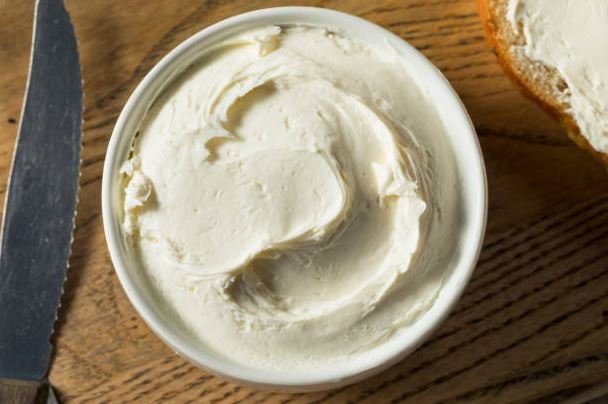You bought non-sticky cheese from the store, only for you to bring it home, and it becomes clumsy. You might be wondering how to keep shredded cheese from clumping.
Cheese is a multipurpose ingredient, and when it becomes sticky, it may be difficult for you to use. To prevent your shredded cheese from clumping, pour a little cornstarch into it and combine. The good thing about using cornstarch is that it does not affect the taste and color of the cheese.
Supermarkets use an anti-clumping agent like cellulose or potato starch to keep pre-shredded cheese from clumping. The supermarket and home anti-clumping agents keep the cheese from clumping by sucking up moisture, so the cheese does not stick.
Why Is My Shredded Cheese Clumping?
Shredded cheeses are soft and flexible, and they can melt like butter. When you put large amounts of shredded cheeses together, there is a tendency that they will become clumsy because of their melting potential. When they melt, they become sticky and clumsy.
Storing shredded cheese without mixing it with an anti-clumping agent like corn or potato starch will clump together. This is because there is nothing to absorb the moisture content in the cheese. Before storing your shredded cheese, add 1-2 teaspoons of cornstarch to prevent it from clumping.
How Do You Shred Cheese Without It Clumping?
Some people prefer buying a block of cheese to a pack of already shredded cheese. This is because most packaged cheese contains additives. So when you buy a block of cheese, how do you shred it into fine, tiny strings without clumping? By refrigerating or oiling the blades or grating disks.
Let me explain further how you can shred cheese without it clumping.
1. Choose Cheese That Will Shred Well
Not all cheeses are the same. Some contain fat or water in increasing amounts, while others do not. Camembert, mozzarella, raclette, young Gouda, Brie, old American cheese, and young cheddar are examples of cheese with high moisture content. These sets of cheese do not grate well because they are soft; slicing them will be better.
Partially hard or hard cheeses will grate well. Parmesan cheese is an example of hard cheese. Ensure that you select sturdy cheeses that will grate correctly.
2. Refrigerate Soft And Semi-Hard Cheeses
If your cheese is the soft type, you can put it inside the refrigerator for like 30 mins so that it can become strong for you to grate. This will also make the cheese not stick to the shredding tool.
3. Oil The Blades Before You Shred
You will have difficulty shredding your cheese if you don’t grease the cutting blades or grating disk. You can use cooking spray on these surfaces so the cheese will not stick while cutting. Note that greasing the blade or disk surface requires a little oil.
4. Grate On Large Holes
If you are using a grater, use the part that has the large holes. This will reduce clumping tendencies, especially for soft cheese.
5. Shed On A Wax Paper
To beat the challenge of transferring shredded cheeses into a container after grating, I advise that you shred them onto wax paper so that transferring them into the container will be easy and you will not squish them in the process.
Below are methods you can cut your cheese.
Method 1: Cut With A Knife
One of the common ways to shred your cheese is with a knife. All you have to do is get your block of cheese and place it on your cutting board. Then cut the cheese into small sizes and cut it again into smaller shreds. Ensure that the knife is sharp.
Method 2: Shred Your Cheese With A Slicer Or Vegetable Peeler
If you have a cheese slicer or vegetable peeler, you can cut your block of cheese into smaller sizes before cutting it into tiny strings. If you are using a vegetable peeler, ensure the blade is sharp.
Method 3: Shred With A Vegetable Chopper
Another excellent way of gating your cheese is to use a vegetable chopper. Although the vegetable chopper is suitable for soft and partially hard cheese, you can still use it for hard cheeses if you have a strong chopper.
To use the chopper: Cut your block into small sizes, then start grating it on the chopper. Use a suitable chopper plate; you can also try grating at different angles.
Method 4: Shred With A Lemon Zester
A lemon zester can be useful in shredding cheese. It is suitable mainly for hard cheese. Cheese shredding is pretty easy with a lemon zester. The zesting process is just the same as shredding a lemon or orange.
Method 5: Use A Food Processor
Shredding your cheese with a food processor is effective and time-saving. If you have one at home, bring out its shredding disk and fix it correctly. After that, cut the right size of cheese that will pass through the processor’s chute. You can put on the processor to start grating.
What Is The Best Way To Keep Shredded Cheese From Clumping?
After shredding, your next step is to store the cheese shreds so they will not clump. The best way to keep your cheese shreds from clumping is to put them in an airtight container. Do not put cheese shreds in a bag because they can easily clump. Instead, spread them in a wide container.
Then sprinkle 1-2 teaspoons of cornstarch (alternatively, you can use regular flour) and mix. Ensure that the anti-clumping agent covers all part cheese. Cover the container so it will not be exposed to air. Keep it in the refrigerator so the cheese shreds will not clump.
Keeping your cheese shreds in a bag is not ideal due to the high clumping tendencies. Your best option is to spread them in a container, and there will no pressure on them.
Can You Store Shredded Cheese In Tupperware Without Clumping?
Yes, you can store shredded cheese in Tupperware, and it won’t get clumped. This is because Tupperware is a brand of the plastic container. It is an airtight container, like the type required to keep shredded cheese.
However, this is not a standalone step to prevent clumping since simply storing your cheese in Tupperware alone won’t prevent it from clumping.
Conclusion
If you’ve been battling with the distasteful look of your cheese getting all clumped up after bringing it home, you’ll find this post helpful. I have outlined all you need to do to keep your shredded cheese as solid as you got it from the store.



















